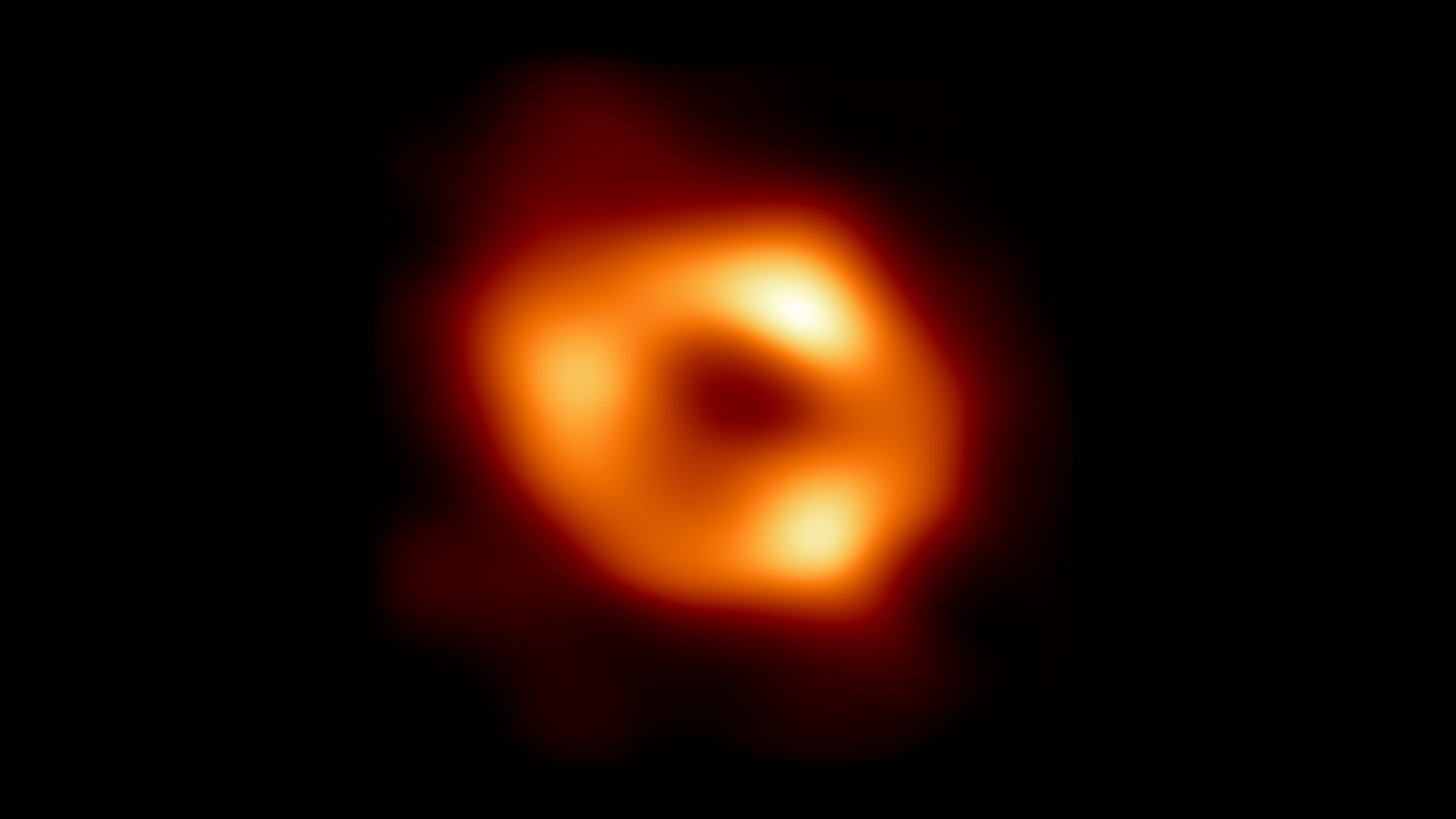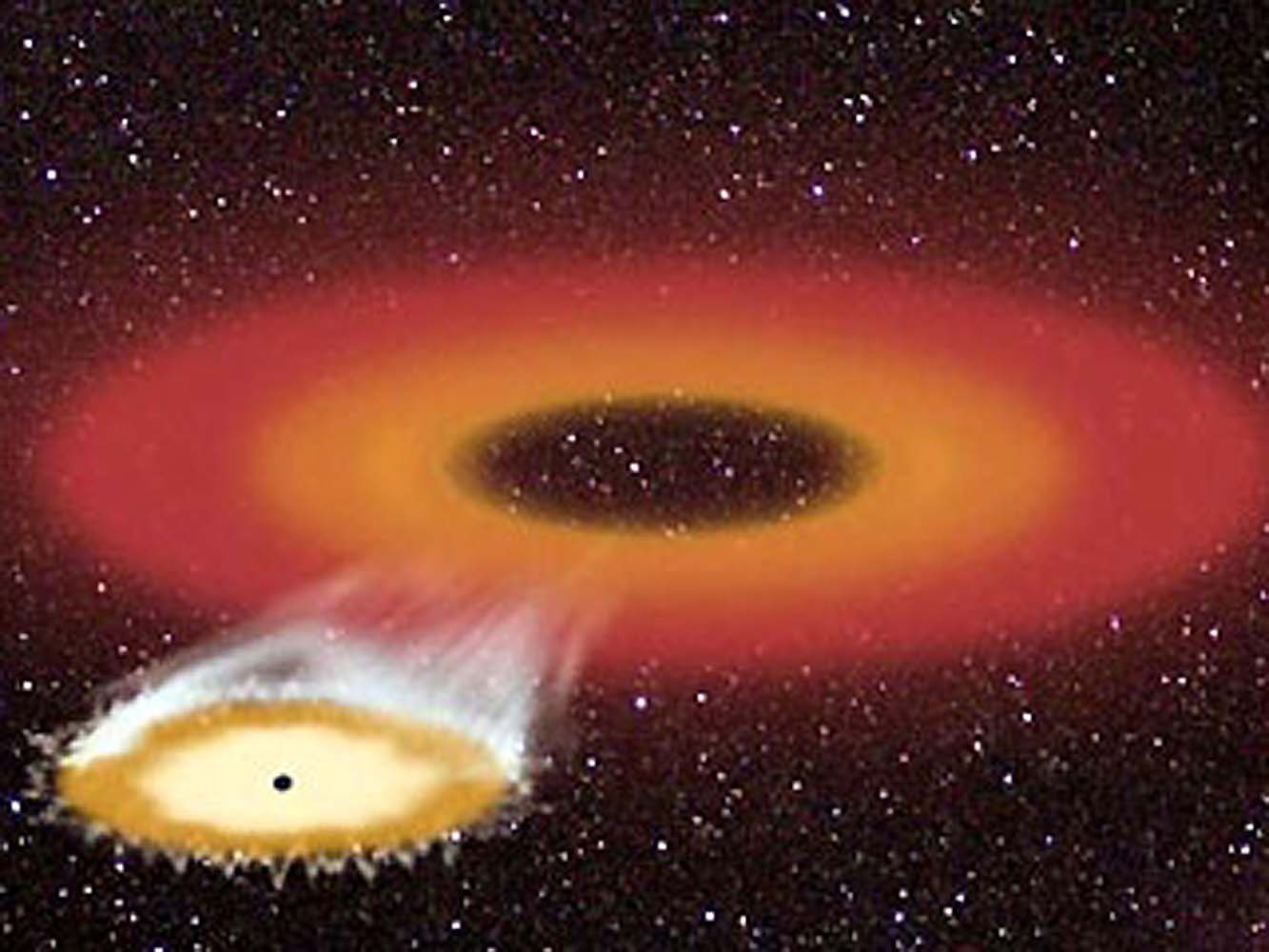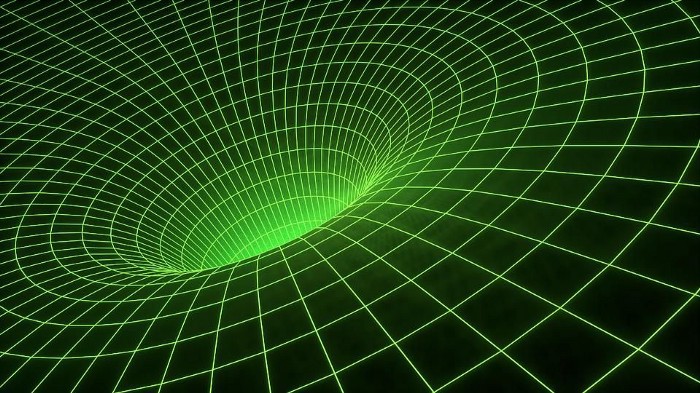Ask Ethan: Why do black holes look like rings, not disks?
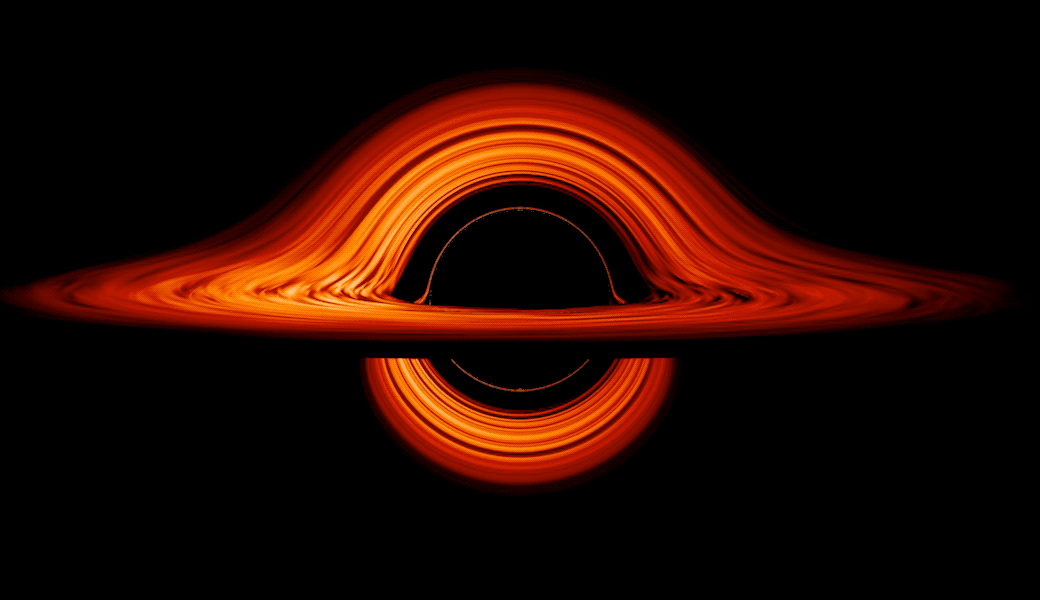
- A black hole creates a region of space from within which nothing, not even light, can escape.
- All around that region, there should be hot, glowing matter, including in front of, behind, and on all sides of the black hole itself.
- Yet, when we look at it, we only see a bright ring, which surrounds a darkened inside. Why do black holes look like rings, not disks?
After a 5-year wait from the time the original, critical data was taken, humanity has finally feasted our eyes upon not one, but two black hole direct images. What both of them have revealed is a photon “ring” surrounding an event horizon. Black holes, surrounded by particles of normal matter, will accelerate these particles and heat them up, causing them to emit radiation. And you might think that the surrounding matter would emit radiation everywhere, leading to a solid “disk” of radiation that we’d see from any perspective. But what we see isn’t a disk at all, but a ring, with darkness circumscribed by the only luminous part.
That leads us to the question of Diganta Bhaskar, who observes:
“The images of the Sagittarius A* and Messier 87* black holes show a bright, ring-like structure surrounding a dark region. Why are the black hole images not a completely bright circular disk? There should be a spherical symmetry of the distribution of glowing gas, but in the photos it sort of seems like the black hole is facing towards us.”
As it turns out, the story is much more complicated than the naive, spherical picture put forth here, but it’s still a legitimate question with answers that might surprise you. Let’s go straight to the environments of these supermassive black holes and find out what’s going on!
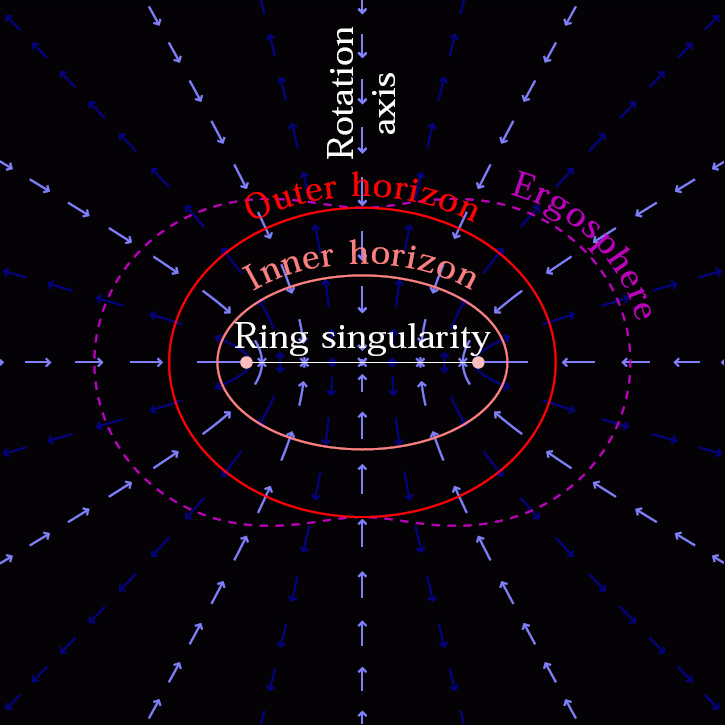
A black hole, very simply, is a large amount of mass collected into one place with such a great concentration that it creates its own event horizon. From within that event horizon, all directions point “down,” to the central singularity, meaning that the fate of any object that crosses over to the inside of the event horizon is to join that singularity and add to the black hole’s overall mass. From outside that event horizon, however, there is still a region where space itself is very strongly curved owing to the black hole’s presence, and that strong spacetime curvature is not only gravitationally attractive, but creates tremendous tidal forces on any object that’s larger and more extended that merely a single point.
When you have a black hole in an environment where other matter is present, that matter, in general, is going to experience a greater gravitational force on the portion of it that’s closest to the black hole than the portion that’s farther away, and that’s going to tear that matter apart into its constituent components. Over time, this will funnel the surrounding matter from a clumpy distribution into a combination of a disk with “flows,” which are density enhancements. This leads to the “standard picture” of a black hole with an accretion disk.
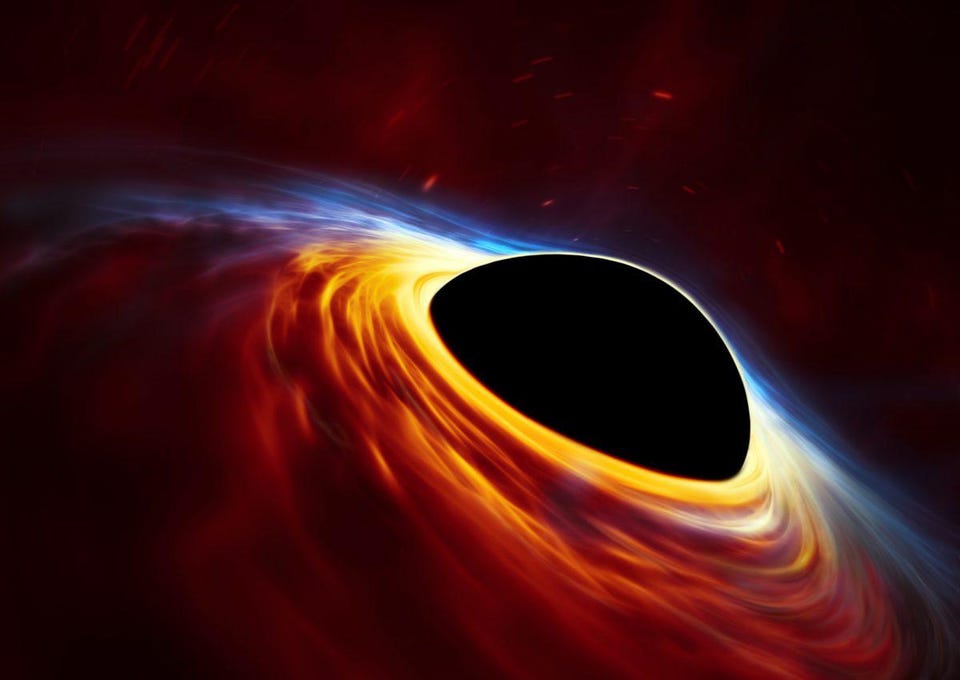
The thing is, though, we don’t just want to observe light from this disk, nor do we want to observe only the matter that gets accelerated and funneled into jets. These components of a black hole are important, often in wavelengths ranging from radio through the infrared all the way up to X-rays, but this doesn’t probe the event horizon of the black hole itself. Rather, it probes the behavior or matter in an environment outside of the event horizon: a useful and informative regime, but not if you want to know about the properties of the black hole or the event horizon itself.
But this material that orbits a black hole — the accreted material that orbits around the black hole, flows into or onto it, that gets accelerated, and that heats up due to collisions, friction, and continued tidal forces — is fundamentally made up of charged particles. Charged particles create electric fields, and they’re also in motion; whenever charged particles move, they create electric currents and magnetic fields as well. And when you have a charged particle moving in the presence of electric and magnetic fields, they accelerate, and they also emit (typically, low-energy) photons due to a process known as radiation reaction.
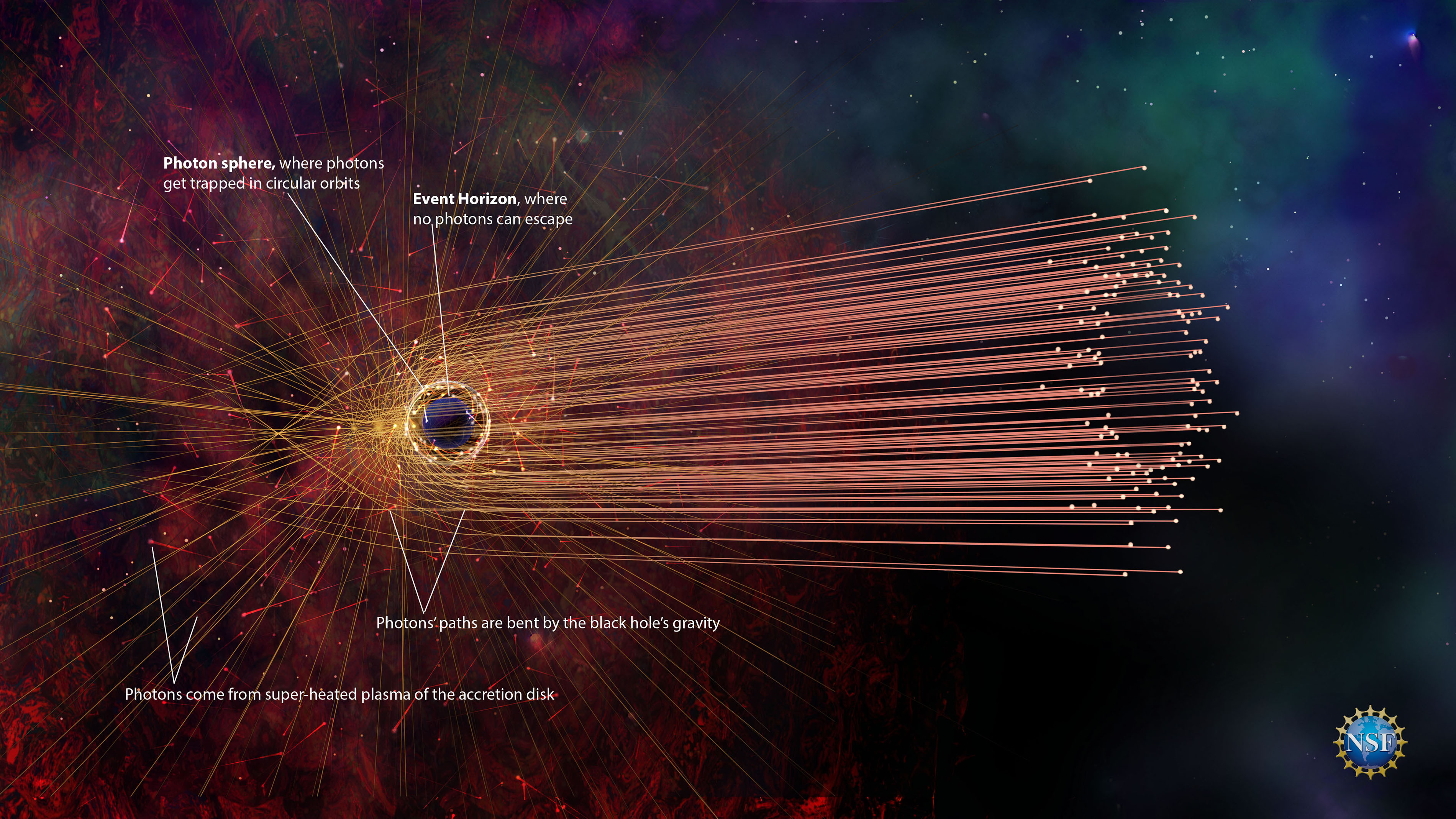
Because of the conservation of energy, the matter that emits these photons begins to lose energy, and starts to inspiral into and fall onto the black hole, losing energy at a faster rate the closer they come to the event horizon. That lost energy is converted into photons, which wind up getting scattered in all directions with respect to the black hole’s event horizon.
Even though, however, these photons get scattered in all directions, they’re not going to have equal fluxes in all directions. Dependent on factors such as:
- the density of the material surrounding the black hole,
- its overall direction of motion,
- the thickness and uniformity of the accretion disk,
- the speed of the disk’s rotation and the amount of friction between various components of the disk,
- the abundance and density of the clumps that create accretion flows,
- and what sorts of infalling matter is coming in to add to and replenish the accretion disk,
we’ll have a preferred set of directions for the maximum and minimum intensities that get emitted with respect to the black hole.
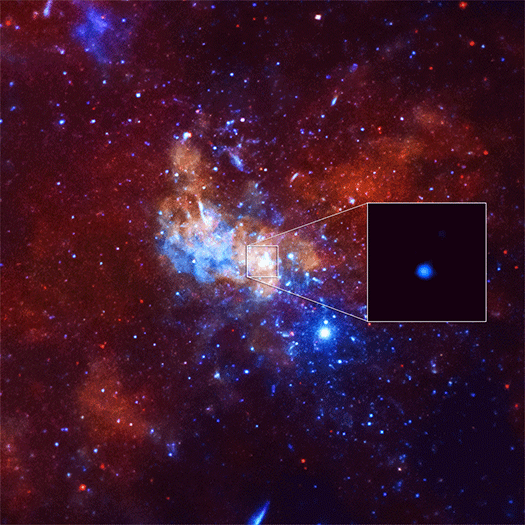
What this means is that the photons that get emitted from around the black hole don’t come out equally distributed. Instead, there are going to be “hot spot” directions, where the emitted photon densities are greater than average, and “cold spot” directions, where the photon densities are far below average.
It’s important to recognize that the accreted material orbits in motion around the black hole, but that the line-of-sight between the black hole and our vantage point here on Earth remains unchanged. As a result, we’d expect to see periodic changes in any view we have of the black hole, since the “hot” components of the material outside of the black hole is going to change its position over time, as will the relatively “cold” components.
But that radiation emitted by the black hole’s accretion disk, in general, is way too small to image directly with even our most powerful telescopes. Only if that radiation somehow gets focused into a very narrow spatial location would we have the potential to see it from across such great galactic or even extragalactic distance. Fortunately, nature has such a “focusing” mechanism: an intense source of gravity, like the black hole itself.
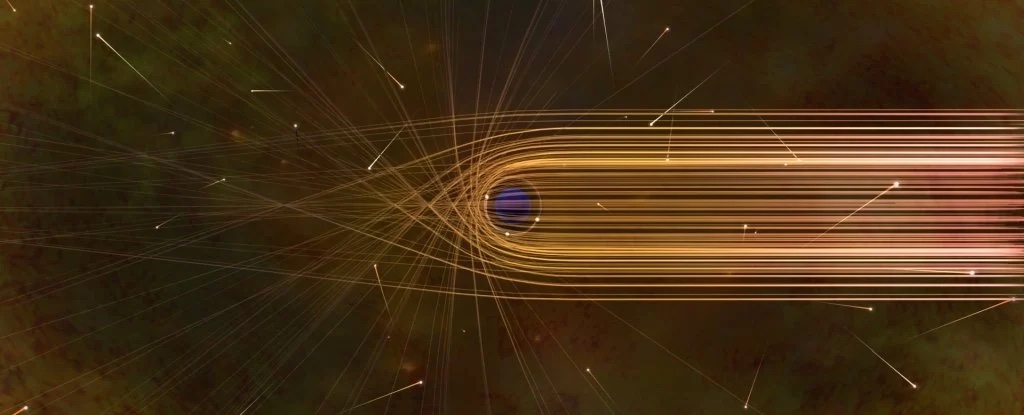
Imagine what it would look like if you had matter that was emitting light omnidirectionally at a black hole. That light would get accelerated around the black hole along all sorts of possible light paths, where each individual photon would wind up moving off in a straight line away from the black hole, but from a different direction’s perspective.
Now, imagine that instead of one source of matter emitting light omnidirectionally, you had a series of different sources of matter, perhaps located everywhere around the black hole but with different densities (and luminous brightnesses) in different locations and in different directions. Now, you’d have photons moving in all directions away from the black hole, but from any vantage point far away from the black hole, only a few photons would arrive at your eyes.
In particular, the light that swirls around from outside the black hole and that gets sent off in a series of straight, parallel lines along the same line-of-sight is going to be what any one particular person observes. No matter where you yourself are located, you’re going to see the light that got accelerated to you from around the black hole’s event horizon, plus any material that was capable of directly emitting light along your line-of-sight that happened to be on what you saw as the “near side” of the black hole.
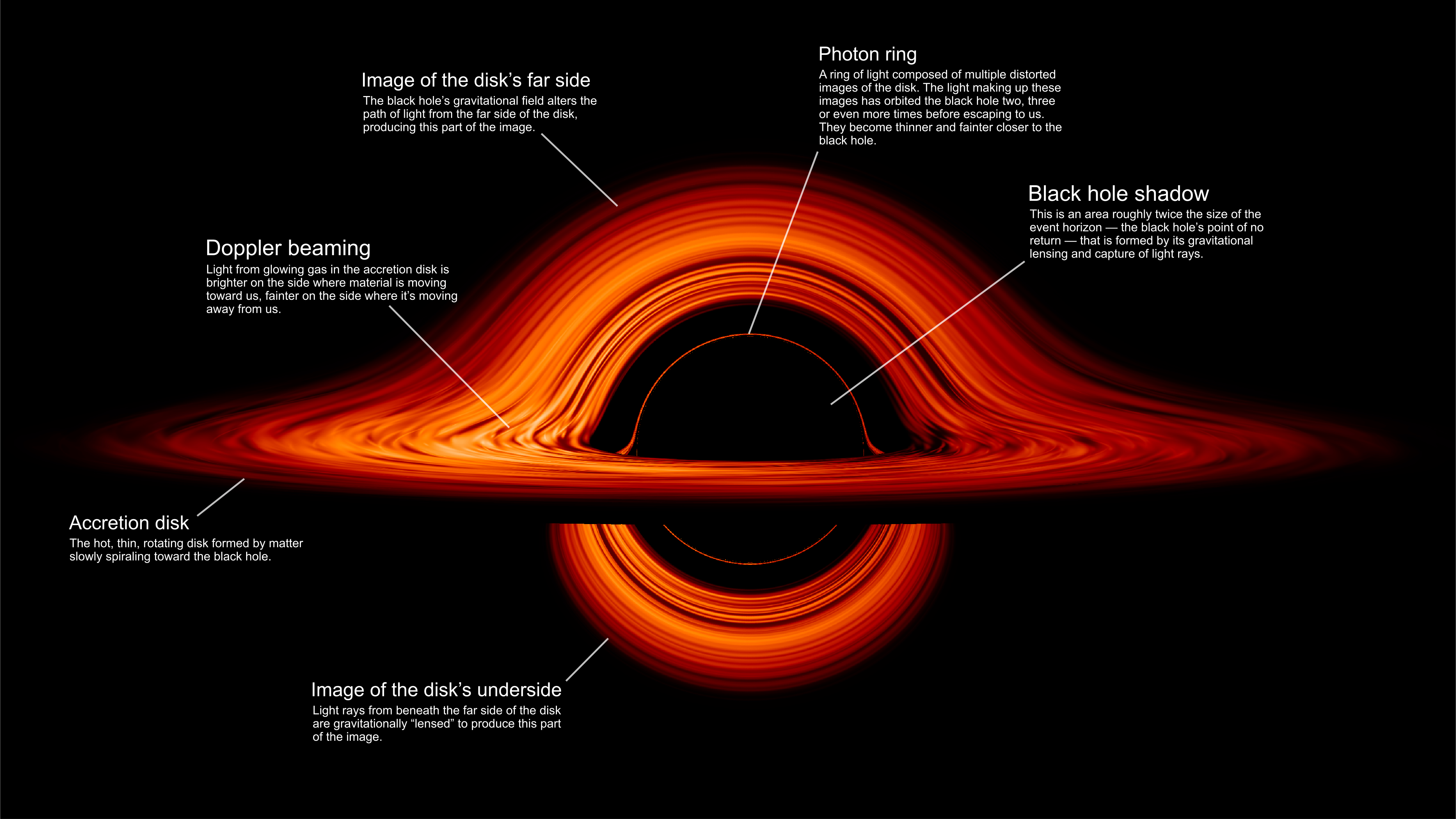
Now, we come to the heart of the question: what dominates?
If the matter on the “near side” of the black hole simply emitted light very strongly in all directions, including away from the black hole (and hence, towards us), we’d expect to simply see the entire area from around the black hole as “lit up,” with no shadow anywhere. It would simply appear as a luminous disk.
On the other hand, if it was only the accelerated matter around the black hole that emitted light, and that light was then bent along a variety of paths that preferentially exited the black hole in a fashion that was parallel to the “edge” of the event horizon, then you’d expect to see a thin, narrow “ring” that traced around the outside edge of the black hole, with no “disk” at all.
And if you had both of these factors at play, what you would see would simply be a function of which effect was more dominant. As it turns out, both of these factors are at play, but they’re at play in different wavelengths of light. If a telescope array that was as sensitive as the Event Horizon Telescope were built to probe infrared wavelengths of light, the “luminous disk” effect would be very clear. But in the very long radio wavelengths that it looked in instead, it was far and away dominated by the “ring” effect.

In fact, that’s why we refer to the images we’ve generated as being “photon rings” around the black holes: because these are collections of radio-wavelength light — or photons — that primarily get accelerated around the black hole and “spat out” parallel to the edge of the event horizon all around the black hole.
What we actually see, however, isn’t simply a uniform ring that’s the size of the black hole’s event horizon. Both of those things are untrue; the ring we observe isn’t uniform, and the ring isn’t the size of the black hole’s event horizon.
The reason the black hole ring isn’t uniform is easy enough to understand for reasons we’ve already touched on: the matter around the black hole, responsible for the emission of radiation, isn’t distributed uniformly, and it’s also not in uniform, random motion around the black hole. Instead, this asymmetrically-distributed matter has a preferred direction to its motion along with a set of flows accompanying it. As a result, the “ring” we see has “bright spots” and “faint spots,” and the overall brightness as well as the brightness of the individual bright and faint spots varies over time.
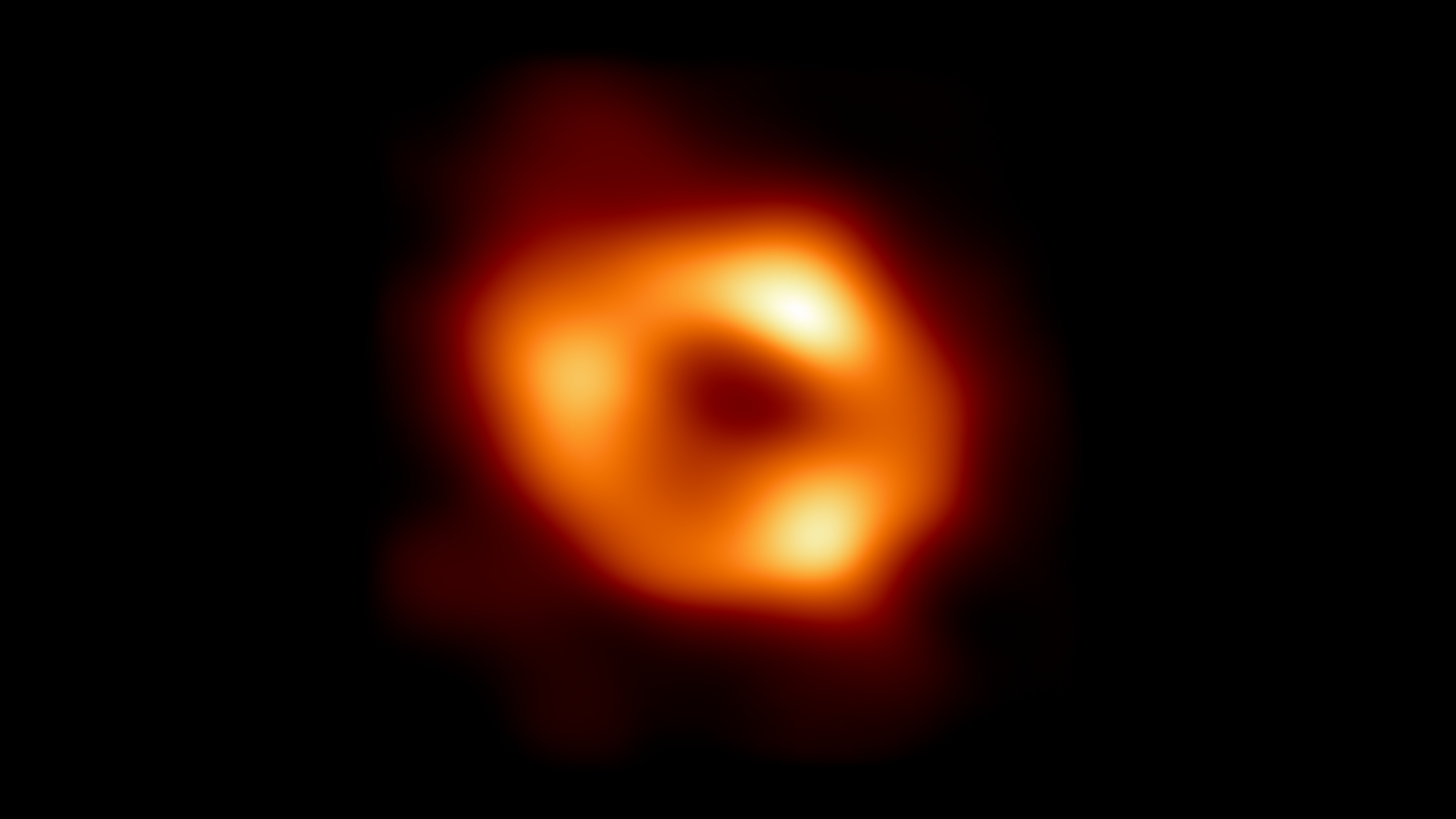
But the fact of the matter is that the size of the photon “ring” that we see is actually inflated by about ~250% compared to the size of the event horizon predicted by General Relativity. This isn’t a surprising effect; it’s one that was predicted well before the first Event Horizon Telescope images were revealed. But it is an important effect that’s inherent to General Relativity, and one that must be understood in order to make accurate predictions concerning what we’ll see when we look at the Universe in precisely this fashion.
The main issue is that mass curves space, and then that curved space affects the path of all the matter and radiation that travels through it. These photons that get accelerated around the black hole’s event horizon and sent off in parallel lines are actually tracing the “edges” of the black hole, but they’re affected by the curvature of space, the same as anything else. As a result, when they arrive at our eyes, they carry the imprint of the curved space that affected them as they left the source, and each black hole, with its own particular mass, will produce a photon ring whose radius is proportional to, but 2.5 times as great as, the actual physical size that corresponds to the event horizon.
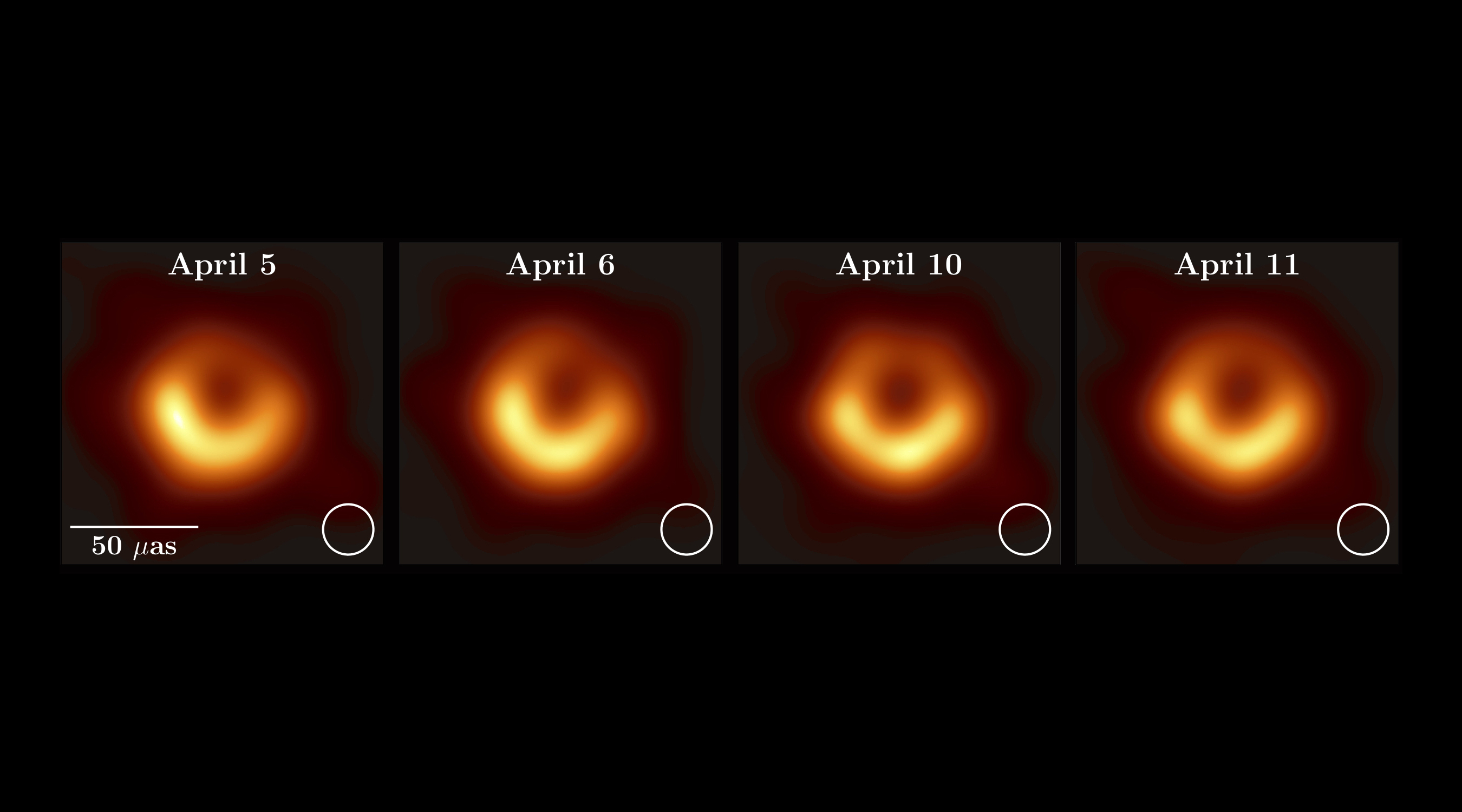
Overall, it’s important to remember that even though black holes are spheroidal in shape, there are many asymmetric properties that they also possess. They:
- all rotate, and they rotate about one particular axis at speeds often approaching the speed of light,
- possess matter that accretes around them in a disk-like configuration, often with flows of “clumpy” material as well,
- possess sufficient gravity to accelerate the surrounding matter, and then to bend the light emitted from that matter around them, and
- then distort the light’s properties due to their intense gravity,
creating an omnidirectional series of non-uniform photon rings, with time-varying and direction-varying brightnesses, especially at radio frequencies.
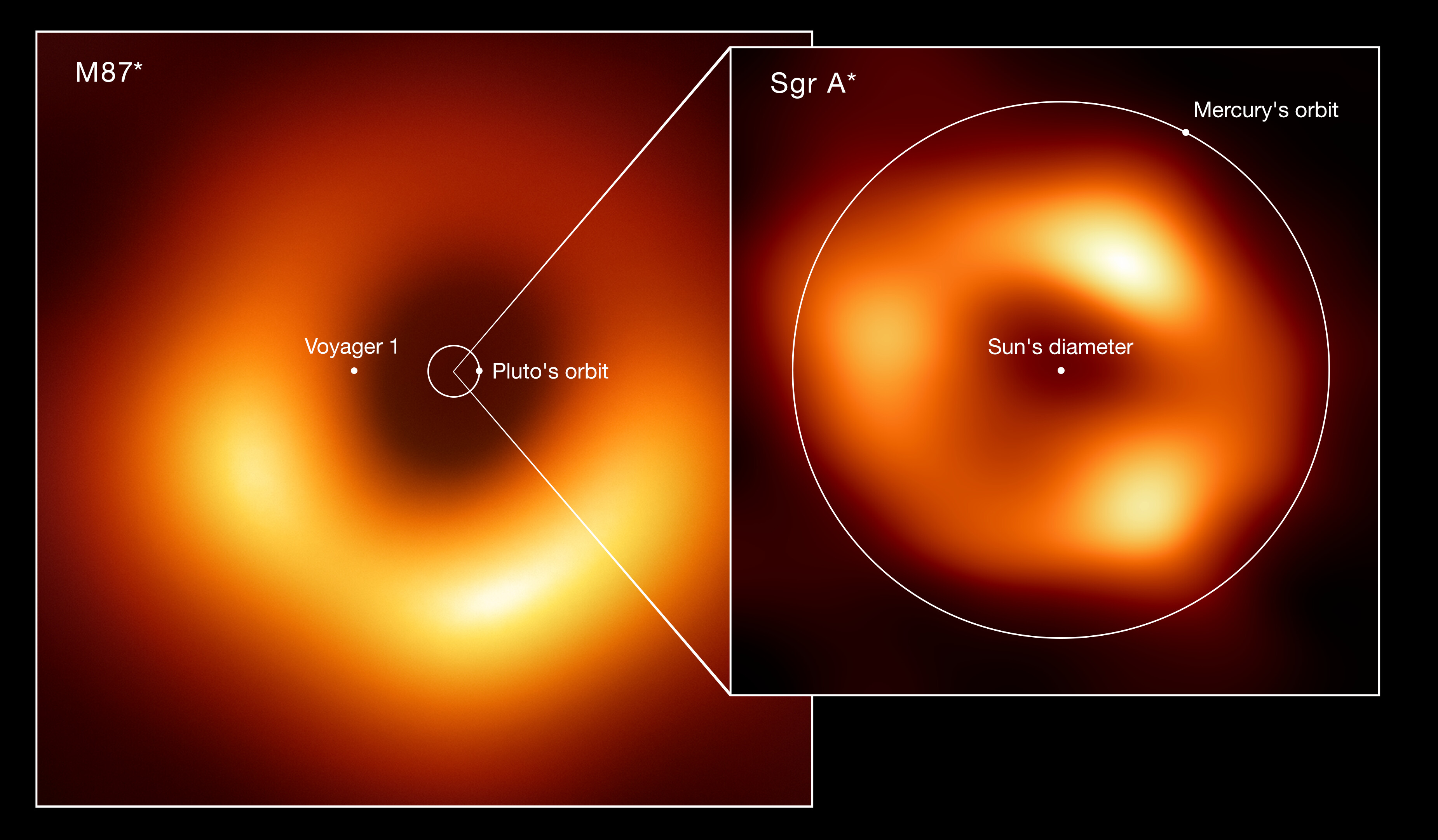
As the science of very long baseline radio interferometry continues to improve, we can expect to capture details about the event horizons of black holes, including their photon rings, at higher resolutions, for black holes that are farther away, and at a greater diversity of radio frequencies. If we were looking in infrared wavelengths of light instead of radio wavelengths, we might be much more likely to see a glowing disk than a mere ring, but at the wavelengths that the Event Horizon Telescope was sensitive to, a “ring” was one spectacular case where theory and observation matched up to extraordinarily high precision.
Send in your Ask Ethan questions to startswithabang at gmail dot com!

